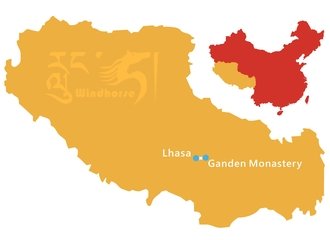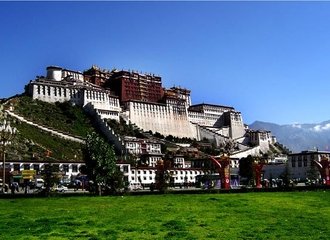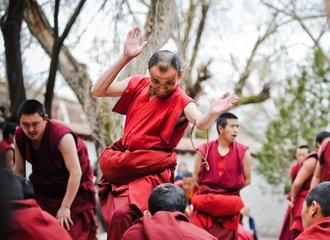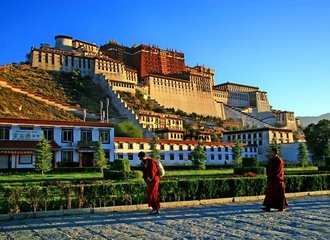Must-try in Beijing - famous Beijing Roasted Duck

In the heart of Beijing's bustling streets and amidst its rich tapestry of history and culture lies a culinary treasure that has captivated the taste buds of locals and travelers alike - the Beijing Roasted Duck. For visitors to China's capital of Beijing, trying the world-famous Beijing roast duck is as much a "required experience" as seeing the Badaling section of the Great Wall!
Known for its succulent meat, crispy skin, and the intricate artistry involved in its preparation, this dish stands as a proud emblem of Beijing's culinary heritage. With origins that hark back to the imperial era, Beijing Roasted Duck is not just a meal; it's a cultural phenomenon, a sensory journey that intertwines the past with the present.
The allure of Beijing Roasted Duck transcends borders, earning acclaim on the global culinary stage. Its fame is such that a visit to China's capital is deemed incomplete without savoring this iconic dish. Chefs from around the world have tried to replicate its unique flavor and texture, yet it remains an experience truly authentic to the narrow alleys and grand banquet halls of Beijing. Whether it's the meticulous preparation, the traditional serving rituals, or the rich historical roots, Beijing Roasted Duck holds a place of honor on the tables of culinary enthusiasts and continues to be a must-try delicacy for anyone visiting the city. As you embark on this culinary voyage, prepare to uncover the layers of flavor, tradition, and artistry that make Beijing Roasted Duck a celebrated symbol of Beijing's gastronomic legacy.

The History of Beijing Roasted Duck
Though Beijing cuisine does not get as much worldwide renown as Cantonese or Sichuan cuisine, Beijing duck has been prepared since the days of the Emporers and is considered one of China's national dishes.
The story of Beijing Roasted Duck is a journey through time, encapsulating centuries of culinary refinement and cultural significance. This esteemed dish, renowned for its delicate flavors and intricate preparation, has graced the tables of emperors and commoners alike, evolving into a symbol of Beijing's rich gastronomic heritage.
Origins in the Yuan Dynasty (1271–1368)
The earliest iteration of the dish can be traced back to the Yuan Dynasty when it was known as "Shaoyazi." Historical records suggest that this early version of roasted duck was a part of the imperial menu, hinting at its royal connections from the very beginning.
Development during the Ming Dynasty (1368–1644)
The dish underwent significant refinement during the Ming Dynasty. The capital's relocation to Beijing brought an influx of culinary talents and resources, setting the stage for the roasted duck to evolve into a more sophisticated and flavorsome dish. It was during this era that the method of roasting ducks in open ovens, allowed the skin to become crispy and the meat succulent, was perfected.

Flourishing in the Qing Dynasty (1644–1912)
The Qing Dynasty marked the golden age of the Beijing Roasted Duck. The establishment of renowned restaurants like Quanjude and Bianyifang during this period played a pivotal role in popularizing the dish. These eateries introduced innovative roasting techniques, such as the hung oven and closed oven methods, further enhancing the flavor and texture of the duck.
Imperial Delicacy to Public Fare
Initially reserved for the imperial family and court officials, Beijing Roasted Duck gradually made its way to the masses. The fall of the Qing Dynasty and the subsequent social transformations democratized the dish, allowing people from all walks of life to savor this exquisite delicacy.
Global Recognition in the 20th and 21st Centuries
The last century has seen Beijing Roasted Duck crossing national boundaries and becoming a global symbol of Chinese cuisine. It's not just a dish but an ambassador of Chinese culture, enjoyed by dignitaries, celebrities, and food enthusiasts worldwide.
Throughout its history, Beijing Roasted Duck has not only survived the test of time but has thrived, adapting to changes in society, politics, and culinary trends. From its royal origins to its status as a beloved staple, the dish represents the essence of Beijing's culinary artistry and cultural richness. As each generation adds its touch to the recipe, the legend of Beijing Roasted Duck continues to grow, ensuring its place in the annals of culinary history.

How is Prepare the Roasting Duck
The preparation of Beijing Roasted Duck is a meticulous process, steeped in tradition and perfected over centuries. Every step, from choosing the right breed of duck to the final roasting, is carried out with precision and care, ensuring that the end product is nothing short of culinary perfection.
Selection of the Duck
The journey of creating the perfect Beijing Roasted Duck begins with the selection of the duck. The White Beijing Duck is the preferred breed, prized for its tender meat and the right amount of fat, which is crucial for achieving the dish's signature crispy skin and succulent flesh.
Preparation Before Roasting
Once chosen, the ducks are plucked, cleaned, and pumped with air to separate the skin from the fat, a crucial step that contributes to the skin's crispiness.
The ducks are then soaked in boiling water for a brief period before being hung to dry. This process helps tighten the skin.
A unique blend of spices and seasonings, including soy sauce, sugar, and various spices, is brushed onto the duck. This not only adds flavor but also aids in achieving the golden-brown color of the skin.
The ducks are left to air-dry further, allowing the flavors to penetrate deeply and the skin to achieve the right texture for roasting.

The Roasting Process
Roasting is where the magic happens, and it's done with utmost precision. There are traditionally two methods: the hung oven and the closed oven.
In the hung oven method, ducks are hung in an open oven and roasted over a wood fire, often fruit tree wood, which imparts a subtle fruity flavor to the meat. The high temperature renders the fat and makes the skin irresistibly crispy.
The closed oven method involves placing the duck in a closed oven, where it's roasted at a carefully controlled temperature. This method allows the duck to cook in its juices, ensuring the meat is tender and flavorful.
Mastery and Timing
The key to the perfect roast lies in the mastery of timing and temperature control. The chefs, with their years of experience and precise techniques, ensure that the skin reaches optimal crispiness without overcooking the delicate meat inside.
Serving Perfection
Once roasted to perfection, the duck is traditionally carved tableside. The chef skillfully slices the duck, ensuring each piece has just the right amount of skin, meat, and fat.
Normally, Beijing roast duck is served together with special spring pancakes, green onions, and sweet hoisin sauce, and you can wrap slices of duck, onions, and the sauce in a pancake with your hands, or use chopsticks if you like.
The preparation of Beijing Roasted Duck is an art form, a testament to the culinary heritage of Beijing. The meticulous process, from the selection of the duck to the final roasting, highlights the dedication to quality and the pursuit of culinary excellence. It's this careful attention to detail and the harmony of flavors and textures that make Beijing Roasted Duck not just a dish, but an experience, cherished by connoisseurs and casual diners alike.

Variations of Beijing Roasted Duck
While the classic Beijing Roasted Duck is in itself a masterpiece of culinary art, various renowned restaurants have introduced their unique takes on this iconic dish, offering a spectrum of flavors and styles that cater to diverse palates. These variations not only honor the traditional essence of the dish but also reflect the innovative spirit of modern Chinese cuisine.
Quanjude's Time-Honored Tradition
Quanjude, a name synonymous with Beijing Roasted Duck, is famed for its time-honored roasting technique using the hung oven. This method passed down through generations, allows the duck to be roasted evenly, imparting a distinct smokiness and a perfectly crisp skin. Quanjude's ducks are known for their tender meat and the thin, crispy skin that has set the standard for the classic Beijing Roasted Duck.
Bianyifang's Unique Closed-Oven Approach
Another venerable establishment, Bianyifang, offers a contrast with its closed-oven method. This ancient technique involves roasting the duck in a closed oven, allowing it to cook slowly in its own juices. The result is a more subtle flavor and a slightly different texture, with the meat being exceptionally tender and moist.
Modern Interpretations
In the contemporary culinary scene, chefs are reinterpreting Beijing Roasted Duck with innovative twists, infusing new flavors and presenting the dish in creative ways. Some restaurants incorporate exotic spices and ingredients, offering a fusion of tastes that complement the traditional flavors of the duck.
Others focus on presentation and serving style, deconstructing the dish and reassembling it in a modern gastronomic context, appealing to a younger generation and international diners seeking a unique dining experience.
The Balancing Act
While traditional methods emphasize the purity and authenticity of flavors, modern interpretations seek to push the boundaries, blending the old with the new. The variations in roasting techniques, seasoning blends, and serving styles reflect the dynamic nature of Chinese cuisine and its ability to adapt and evolve while staying true to its roots.
Beijing Roasted Duck, in its many forms, embodies the rich culinary heritage of Beijing. Whether it's the classic rendition from Quanjude, the tender delicacy from Bianyifang, or a contemporary interpretation from a modern gourmet kitchen, each variation offers a unique taste experience. Together, they paint a diverse and vibrant picture of Beijing's gastronomic landscape, inviting diners to explore the depths of flavor and tradition that this iconic dish represents.

How Properly Eat Peking Duck
Eating Beijing Roasted Duck is not just about savoring a dish; it's an immersive experience that engages all your senses and follows a cherished ritual. The traditional way of serving and eating the dish is a ceremonial process, each step enhancing the overall enjoyment of this culinary marvel.
The Art of Presentation
The experience begins with presenting the whole roasted duck to the diners, a gesture showcasing the chef's skill in achieving the perfect roast. The duck is then expertly carved tableside, with the chef slicing it into thin, even pieces. Each slice is a harmonious balance of crispy skin, succulent meat, and a thin layer of fat, ensuring a burst of flavors and textures with every bite.
The Assembly of the Perfect Bite
Diners are provided with thin, steamed pancakes or lotus leaf buns, along with an array of condiments such as finely sliced scallions, cucumber, and sweet bean sauce or hoisin sauce.
To assemble, you take a pancake or bun in your hand, spread a small amount of sauce over it, and then place a few pieces of duck on top. Add a few strands of scallions and cucumber for a refreshing crunch and to balance the richness of the duck.
Finally, fold or roll the pancake or bun to encase the fillings, creating a small parcel that's bursting with flavors and textures.
The Dining Etiquette
Eating Beijing Roasted Duck is often a communal affair, meant to be enjoyed by family and friends. Sharing the duck and assembling the bites adds to the communal joy and the overall dining experience.
It's customary to eat the duck with chopsticks and to take small, deliberate bites, allowing you to fully appreciate the interplay of flavors and the craftsmanship that went into preparing the dish.
Beyond the Duck
While the duck is undoubtedly the star of the show, it's often accompanied by other dishes that complement its rich flavors. A typical meal may include a variety of vegetable dishes, soups, and other delicacies, turning the dining experience into a lavish feast.
Eating Beijing Roasted Duck is a ritual steeped in tradition, a celebration of flavors, and a testament to the communal nature of Chinese dining. The careful preparation of the duck, combined with the interactive and communal aspect of assembling and sharing the bites, makes the experience uniquely enjoyable and culturally enriching. It's not just a meal; it's a journey through the rich tapestry of Beijing's culinary history and culture.

Where to try the Best Roasted in Beijing Restaurants
For a truly authentic Beijing Roasted Duck experience, consider visiting one of these renowned establishments, each celebrated for their long-standing traditions, impeccable quality, and mastery of the art of roasting duck.
1. Quanjude (全聚德)
History and Legacy: Established in 1864, Quanjude boasts a storied history and is arguably the most famous name associated with Beijing Roasted Duck. The restaurant is known for its unique roasting technique that involves hanging the ducks in the oven, resulting in crispy skin and tender meat.
Ambiance: Quanjude offers a grand dining experience, with decor that reflects its rich heritage. The restaurant often attracts a mix of locals and tourists, making it a bustling, vibrant place to dine.
Signature Experience: Do not miss the opportunity to witness the traditional duck-carving ceremony performed by skilled chefs at your table.
2. Bianyifang (便宜坊)
A Piece of History: With origins dating back to the Ming Dynasty, Bianyifang is another pillar in the world of Beijing Roasted Duck. It's renowned for the closed-oven method of roasting, which involves cooking the duck slowly to retain its flavors and tenderness.
Atmosphere: The restaurant offers a more intimate dining experience, perfect for those who prefer a quieter setting to enjoy their meal.
Distinguishing Feature: The succulent and moist texture of the duck, a result of the unique roasting technique, sets Bianyifang apart.
3. Dadong (大董)
Modern Twist: While Dadong respects the traditional essence of Beijing Roasted Duck, it's known for introducing a modern twist to the dish. The restaurant is celebrated for its innovative approach and artistic presentation.
Contemporary Elegance: Dadong offers a chic and contemporary dining atmosphere, attracting a crowd that appreciates both the art of food and modern culinary trends.
Unique Selling Point: Apart from the classic duck, Dadong also offers a menu featuring creative and modern Chinese dishes, making it a hit among food enthusiasts looking for a blend of traditional and contemporary flavors.
When visiting these establishments, it's not just about the meal; it's about embracing the rich culinary culture and history that each place embodies. While they all serve the iconic Beijing Roasted Duck, their unique roasting techniques, ambiance, and level of service offer diverse experiences. Whichever you choose, you're in for a memorable culinary adventure.

Practical Information for Travelers
Reservation Advice
Popular restaurants can get crowded, especially during peak dining hours. Make a reservation in advance to secure your spot and avoid long waiting times.
If visiting a high-end restaurant, inquire about their dress code and any other dining protocols to ensure a smooth experience.
Approximate Price Range
Prices can vary significantly based on the restaurant's prestige and location. In top-tier restaurants, expect to pay a premium for the ambiance and service, with prices ranging anywhere from 200 to 400 RMB per duck.
More budget-friendly options are available in smaller local eateries, where you can enjoy a delicious duck at a fraction of the price.
Etiquette and Tips for Enjoying the Dish Authentically
Embrace the communal aspect of the meal. Share the duck and the accompanying dishes with your companions.
Use chopsticks to handle the duck and the pancakes, and follow the traditional way of assembling your bite for an authentic experience.
Pace yourself. Enjoy each bite slowly to savor the flavors and the unique texture of the duck.
Complement your meal with a pot of Chinese tea or a local beer to balance the richness of the duck.
Remember, enjoying Beijing Roasted Duck is not just about the food; it's about the experience. Engage with the tradition, respect the culinary art, and immerse yourself in the cultural richness that this iconic dish represents. Happy dining!

Final words about Beijing Roasted Duck
Beijing Roasted Duck is not merely a dish; it's a profound culinary journey that encapsulates the essence of Beijing's rich history, culture, and gastronomic excellence. Renowned globally, this iconic delicacy offers more than just a meal—it provides an immersive experience, from the meticulous preparation of the duck to the ceremonial presentation and communal enjoyment. As you bite into the crispy skin and savor the tender, flavorful meat, you're not just tasting food but partaking in a centuries-old tradition that has been perfected over generations. Whether you choose the time-honored establishments of Quanjude and Bianyifang or opt for a modern interpretation at places like Dadong, each bite is a testament to the culinary mastery and cultural heritage of Beijing. So, as you embark on this culinary adventure, remember that enjoying Beijing Roasted Duck is about embracing tradition, savoring each moment, and appreciating the intricate blend of history, culture, and flavors that make this dish a revered symbol of Beijing's gastronomy.














